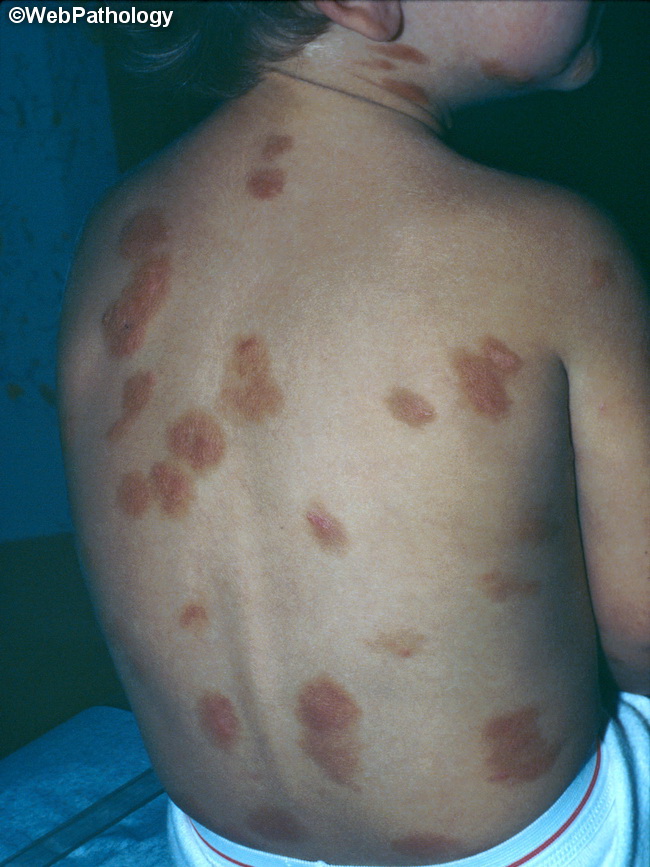Urticaria Pigmentosa : Introduction


Comments:
Introduction: Maculopapular cutaneous mastocytosis (aka urticaria pigmentosa) is the most common form of mastocytosis and accounts for 80% of cutaneous mastocytosis. It is seen most commonly in children, usually within 1st year of life, and may be present at birth. The patients develop pruritic, erythematous, red-brown, papules, macules, or plaques usually on trunk, although any site can be involved. As shown in this photograph, the lesions in children tend to be fewer, larger (up to 2-3 cm in size) and more papular than in adults who tend to have more widespread, smaller, more heavily pigmented macular or maculopapular lesions. Gentle stroking of lesions causes erythematous swelling within a few seconds - a phenomenon known as Darier sign. There may be dermatographism (see next image). Blister formation is common in patients below 3 years of age and occurs in all forms of cutaneous mastocytosis. It may mimic bullous dermatoses. Childhood cases are usually self-limiting and resolve by puberty. Adult cases tend to persist. In such situations, systemic mastocytosis should be excluded.



